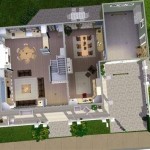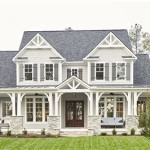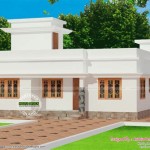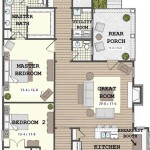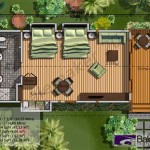Portable House Floor Plans: Design Considerations and Options
Portable houses, also known as modular homes or prefabricated homes, represent a significant shift in residential construction. This building methodology involves constructing housing units off-site in a controlled factory environment and then transporting them to the final location for assembly. The appeal of portable houses lies in their potential for faster construction times, reduced costs, and a smaller environmental footprint compared to traditional stick-built homes. The design of a portable house hinges significantly on its floor plan. A well-designed floor plan optimizes space, functionality, and aesthetics, while adhering to the constraints of transportation and assembly.
When considering portable house floor plans, understanding the underlying principles of modular construction is crucial. Modules are typically designed to fit within standard transportation dimensions, influencing the overall size and shape of individual units. These limitations necessitate creative space planning and a focus on efficient layouts. Furthermore, the floor plan must account for connection points between modules, ensuring structural integrity and seamless integration once the units are joined. Therefore, the selection of a suitable floor plan becomes a pivotal step in realizing a functional and comfortable portable home.
Key Considerations in Portable House Floor Plan Design
Several factors demand meticulous attention when designing or selecting a floor plan for a portable house. These considerations encompass the practical limitations of transport, the structural requirements of modular construction, and the specific needs and preferences of the homeowner. Addressing these considerations proactively can prevent costly alterations and ensure a satisfactory final product.
Transportation Constraints: The dimensions of each module are dictated by permissible road and highway transportation limits. Over-sized loads require special permits and can significantly increase transportation costs. Standard module widths generally range from 12 to 16 feet, while lengths can vary considerably. Consequently, floor plans must be designed to conform to these constraints. Open-concept designs are often favored, as they maximize usable space within the module's footprint. Narrow and long layouts are common, particularly in multi-module homes, to create linear living spaces. In addition, the height of the module is also crucial. These height restrictions need to be considered when designing multi-story portable houses, influencing the amount of headroom available, as well as the roof pitch required.
Structural Integrity and Connection Points: The structural integrity of a portable house is paramount. The floor plan must account for the placement of load-bearing walls and support beams, ensuring the modules can withstand the stresses of transportation and assembly. Furthermore, the design must incorporate secure and weatherproof connection points between modules. These connection points are typically located along the perimeter walls and rooflines. The floor plan should minimize the number of structural modifications required on-site, as these can add to construction time and costs. The location of plumbing and electrical systems should be carefully planned to facilitate efficient connections between modules, minimizing the need for complex on-site installations.
Functional Space Planning: Space optimization is a key objective in portable house design. Homeowners must carefully consider their lifestyle and needs when selecting a floor plan. Open-concept living areas, combined with strategically placed storage solutions, can maximize usable space. Multi-functional rooms, such as a combined living room and dining area, are common in smaller portable homes. The layout of bedrooms and bathrooms should prioritize privacy and functionality. Consideration should be given to accessibility features, such as wider doorways and ramps, for individuals with mobility limitations. The floor plan should also consider the orientation of the house on the lot, maximizing natural light and ventilation to create a comfortable living environment.
Common Portable House Floor Plan Types
Portable house floor plans are as varied as traditional house plans, catering to different needs and preferences. However, certain floor plan types are particularly well-suited to modular construction. These layouts are designed to maximize efficiency, minimize transportation costs, and facilitate seamless integration of modules.
Linear Floor Plans: This is the most common type of portable house floor plan. These modules are arranged in a straight line, creating a rectangular or elongated structure. Linear floor plans are well-suited for narrow lots and can be easily expanded by adding modules at either end. The layout typically features an efficient arrangement of rooms along a central hallway, maximizing usable space within the limited width of each module. This type of floor plan is particularly popular for single-story portable homes.
Box-Shaped Floor Plans: This design utilizes square or rectangular modules that are connected to form a larger, more compact structure. Box-shaped floor plans are often used for smaller portable homes, such as cabins or accessory dwelling units (ADUs). The layout is simple and efficient, with rooms arranged around a central core. This type of floor plan is well-suited for maximizing usable space on a small footprint. Box-shaped modules can also be stacked to create multi-story portable homes.
"L" Shaped Floor Plans: This design combines two modules to create an "L" shaped structure. This type of floor plan is well-suited for creating distinct living areas, such as separating the living room and kitchen from the bedrooms. A variation involves creating a central courtyard, providing an outdoor living space that is sheltered from the elements. "L" shaped floor plans can also be used to create a more visually interesting exterior design, adding architectural character to the portable home.
Modifying and Customizing Portable House Floor Plans
While a variety of pre-designed floor plans are available for portable houses, homeowners often desire modifications or customizations to tailor the design to their specific needs and preferences. Alterations to floor plans are possible, but it is crucial to understand the limitations and potential costs involved.
Structural Modifications: Significant structural modifications, such as moving load-bearing walls or altering the roofline, can be complex and expensive. These types of alterations may require engineering review and can add to the overall construction time. It is generally best to avoid major structural changes if possible. Minor modifications, such as adding or removing interior walls, are typically easier and less costly to implement.
Interior Finishes and Fixtures: Customizing interior finishes and fixtures is a relatively straightforward way to personalize a portable house. Homeowners can select their preferred flooring, cabinetry, countertops, and appliances. The manufacturer will then install these items during the construction process. This allows homeowners to achieve the desired aesthetic and functionality without altering the fundamental floor plan. The choice of finishes can significantly impact the overall look and feel of the home, allowing homeowners to express their personal style.
Exterior Modifications: Exterior modifications, such as adding a porch, deck, or different siding materials, can enhance the curb appeal of a portable house. These modifications are typically completed on-site after the modules have been assembled. Exterior changes can dramatically improve the aesthetic and functional aspects of the house, integrating it with the surrounding landscape. Careful planning and material choices are vital to ensure that the additions blend seamlessly with the modular design of the portable home. This helps maintain the harmony between prefabricated elements and custom enhancements.
Working with a Designer or Architect: Engaging a designer or architect who specializes in modular construction can be invaluable when customizing a portable house floor plan. These professionals can provide expert guidance on space planning, structural considerations, and material selection. They can also help navigate the regulatory requirements and building codes specific to modular construction. Their expertise ensures that the final design meets the homeowner's needs while adhering to the constraints of the modular building process. This collaboration can lead to innovative solutions, optimizing both the functionality and aesthetics of the portable home while respecting budgetary and logistical limitations.
In conclusion, numerous aspects go into proper portable house floor plan design. The interplay between structural integrity, transportability, and spatial optimization is crucial for a successful build. The aforementioned considerations and options related to portable homes will potentially aid future owners.

Tiny House Floor Plan Cabin Plans Shotgun

Shedsplans Info Tiny House Floor Plans Cabin Lofted Barn

Compact And Stylish Portable Employee Housing

Single Wide Mobile Home Floor Plans Factory Select Homes

Transpa Tiny House Clipart Portable Building 12x32 Cabin Floor Plans Hd Png Is Free Shed To

27 Adorable Free Tiny House Floor Plans Craft Mart

Compact And Stylish Portable Employee Housing

Shedsplans Info Tiny House Floor Plans Cabin Lofted Barn

Tiny House Floor Plans Absolute Houses

Image Result For 12 By 32 Portable Building Tiny House Floor Cabin Plans Small

